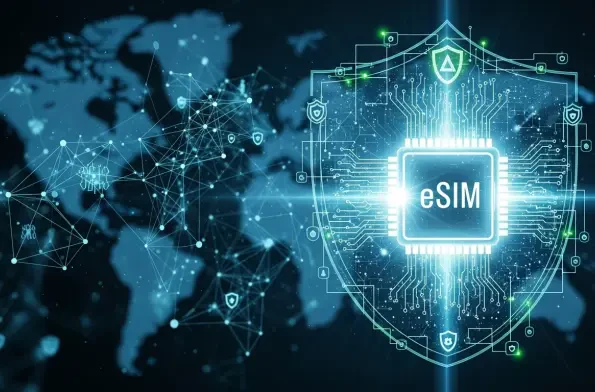With eSIM technology experiencing rapid adoption across smartphones and IoT devices, a concerning security flaw has surfaced, posing a serious risk to user privacy and data integrity. It has been discovered that some older eUICC cards, particularly versions 6.0 and below from Kigen, might allow unauthorized access, permitting devices to be hijacked and user data compromised. This revelation exposes vulnerabilities that could be exploited for malicious purposes, underscoring the urgency for robust security measures in increasingly interconnected digital ecosystems.
Understanding eSIM Technology
eSIM technology, or embedded SIMs, revolutionizes mobile connectivity by providing digital SIM functionalities through integrated chips within devices. Unlike traditional SIM cards that require physical handling, eSIMs offer seamless remote profile management, enabling users to switch mobile plans effortlessly. As more manufacturers incorporate this technology into their devices, understanding its core structure and principles becomes imperative for optimizing security.
Features of Digital and Remote Management
Digital SIM Functionality
At the heart of eSIM benefits lies the digital SIM functionality, enabling users to manage their mobile profiles through embedded chips. This setup allows greater flexibility compared to standard SIM cards, eliminating the need for physical swaps when changing operators. The user experience is enhanced by on-the-fly network switches and seamless international roaming capabilities, heralding a new era in connectivity.
Secure Remote Management
The technology’s remote management aspect is particularly appealing, streamlining how user profiles are updated and maintained. eSIMs facilitate operations such as provisioning and deactivating service plans without physical intervention, promising greater convenience for consumers and operational efficiency for providers. However, these benefits should be aligned with the necessity for heightened security frameworks to protect against potential vulnerabilities.
Unveiling Security Threats
Recent developments have raised alarms regarding eSIM security vulnerabilities, most notably in older versions of Kigen’s eUICC cards. A flaw identified in the GSMA TS.48 test profile specification might allow malicious applications to be installed discreetly by exploiting public keys. This vulnerability poses risks such as unauthorized extraction of operator secrets and manipulation of user profiles, turning eSIMs into gateways for attackers to exploit device settings and data.
Security Explorations, a research team from Poland, disclosed this critical flaw, emphasizing the potential for clandestine surveillance by powerful adversaries like nation-states. Earlier indications pointed to similar vulnerabilities in Oracle’s Java Card system. These findings challenge the perceived security advantages of eSIMs and highlight the importance of a collective response from industry players to address and rectify these issues promptly.
Current Use Cases
eSIM technology has gained traction across multiple industries, especially within smartphones, wearables, and IoT devices. eSIMs support dynamic connectivity scenarios, such as global communication networks, remote device management, and real-time data analytics, which are vital for modern business and lifestyle applications. Specific implementations showcase eSIM’s capability in streamlining operations, optimizing resource allocation, and enabling innovative services that redefine connectivity paradigms.
Addressing Challenges and Obstacles
Despite its promising features, eSIM technology grapples with several challenges. These include technical barriers associated with secure data transmission, susceptibility to cyber threats, and regulatory constraints that can hinder widespread adoption. Industry leaders must navigate these impediments while advocating for standardized security protocols and enhancing user trust through improvements in reliability and performance.
Prospects for eSIM Advancement
Looking ahead, the eSIM landscape is poised for substantial evolution as stakeholders invest in enhancing its security and functionality. Anticipated advances in eUICC architecture and stronger security standards promise to bolster the technology’s reliability, ensuring its suitability for critical applications that demand fortified data protection. Strategic collaborations between technology firms and the security sector will be crucial in driving innovations and setting benchmarks for secure digital ecosystems.
Conclusion
In showcasing both strengths and vulnerabilities, the review underscores the need for rigorous security enhancements in eSIM technology. Addressing the weaknesses identified by research teams and implementing patches, such as Kigen’s version 7.0 fix, are critical steps toward ensuring the trustworthiness of digital SIM platforms. Though challenges persist, the potential for eSIM to transform connectivity patterns remains strong, warranting focused efforts to safeguard its evolution and fully harness its capabilities for future technological landscapes.













